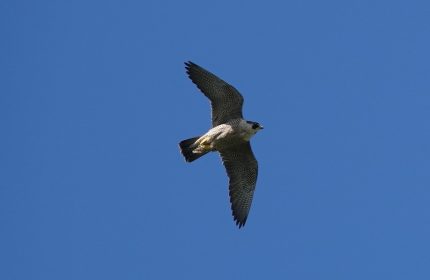How to create a garden fit for a king
In the run-up to the coronation, a top designer looks at how we can follow the King’s approach to gardening
How can you transfer elements of the King’s beloved Highgrove Gardens to your own home?
When award-winning designer Paul Stone was tasked with designing A Garden Fit For A King, the headline show garden in the forthcoming BBC Gardeners’ World Live at the NEC, he took Charles’ ethos towards the environment as his inspiration, rather than trying to replicate any of the gardens at Highgrove.
View this post on Instagram
“He’s been at the forefront of driving gardening ethos, right from the 1980s, when he bought Highgrove and started gardening in his own garden,” enthuses Stone, who has won awards at Chelsea and Hampton Court.
“At the time [in the 1980s], what he wanted to do in his own garden was quite different from how most other people were doing things. He wanted to be organic. He wanted to be sustainable and environmentally friendly. These [things] were a bit low on the pecking order back in the 1980s.
“He actually got quite a bit of flak. People with vested interests, people that wanted to sell you fertilisers, composts, pesticides and herbicides – these are things that he was eschewing in favour of running the garden in his own style.
View this post on Instagram
“In recognition of that, my show garden celebrating his coronation is also celebrating what he’s managed to do at Highgrove and how he’s managed to influence other gardeners over the last number of decades.”
Stone’s 15-metre square show garden has been inspired by the Highgrove arboretum, and features beech, willow, elm, dogwood and elder.
Colour will be provided by a carpet of annual and perennial wildflowers and grasses, with areas in dry shade featuring campanula, digitalis, geranium and lamium, while achillea, knautia and hawkweed will occupy sunny, open spots. There’s a focal point of a low stone building loosely styled on a Scottish bothy.

Sketch of A Garden Fit For A King show garden
Stone, who has visited Highgrove and spoken to the head gardener, has met Charles briefly over the years through building gardens at Chelsea and in his role as head of horticulture at the Eden Project.
Here, he shows how some of the achievable things you can take from the King’s ethos…
Use natural materials
View this post on Instagram
Use things like natural stone and untreated timber either in structures or paved surfaces, he advises.
“Charles has been very vocal about how modern-day buildings don’t fit in with the environment. In the show garden, we have a building that I’m sure that he will love that will sit really comfortably within the environment it’s placed.”
Make your own compost
“People don’t give up enough space within their garden to properly go through a process that can only be about six months in turning green waste into usable compost that can benefit the garden throughout. It’s an essentially organic approach which is fully maintained at Highgrove.”
Encourage wildlife
View this post on Instagram
“Do that by researching what wildlife you’d like to invite into the garden,” Stone suggests.
“Certain types of flowering plants and certain types of environment will encourage butterflies or bees, or other insects depending on your interest, but if you just want general interest, then a range of flowering plants throughout the year is something that should be aspirational.”
Rethink your lawn
View this post on Instagram
“I’m promoting a change in view about what your lawn should be like. Moss and weeds in lawns are mini-environments that are beneficial to the environment, while mowing a monoculture of grass most definitely isn’t.
“In many respects this historic love of a bowling green-type lawn is actually the antithesis of good environmental practice.”
Be diverse with your planting
“With perennial wildflowers there’s no problem with growing them in the right place in the garden. Plants like viper’s-bugloss, evening primrose, campion and verbascum are all beautiful flowers in their own right.”
Perhaps consider options other than bedding plants, Stone suggests. “Try to be more eclectic in your menu of what things could do well in your garden over a long period of time. Even perennial geraniums, rather than cultivated forms, have a really long flowering period,” he says.
Consider non-native as well as native
View this post on Instagram
“It’s proven that there’s a strong contribution by non-native flowering plants, like lavender, to benefit the fauna in your garden. I’m not saying you should only use native plants.”
He points out that the Highgrove garden houses a number of Japanese maples, which also feature in Stones’ show garden.
Have fun
View this post on Instagram
“I should mention Charles’ love of topiary – as a nod to that we will be having some topiary balls on display, recognising the fun you can have in shaping plants, connecting with them and enjoying the effects they can have in your garden – both of order and disorder.”




















